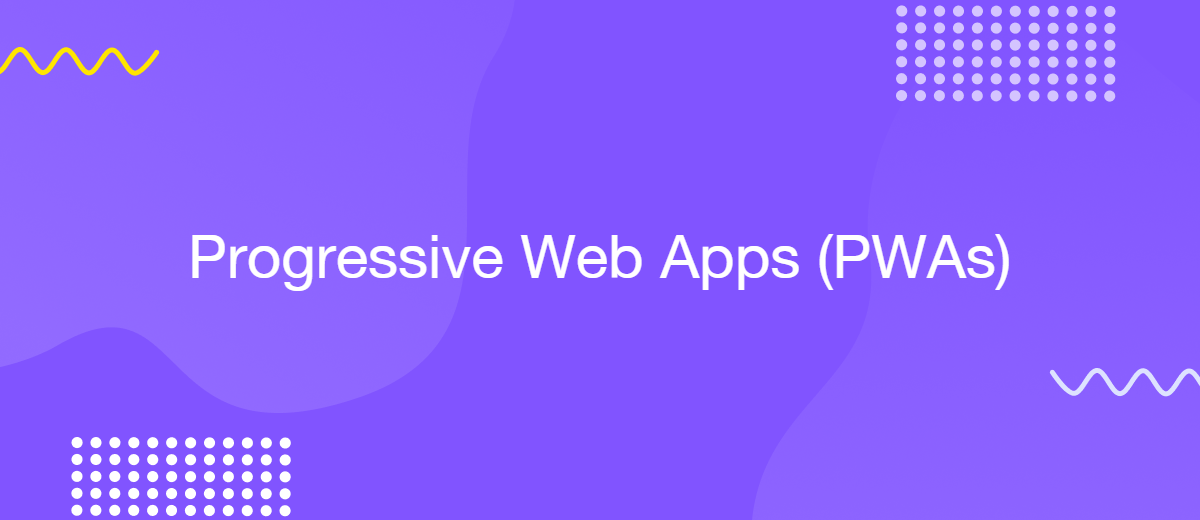The Power of Progressive Web Apps for Business
Mobile applications provide businesses with a number of significant benefits, helping companies provide their products and services to customers more easily and quickly. Meanwhile, the traditional method of installing programs on mobile devices through marketplaces has a number of disadvantages and limitations that worsen the user experience.
A new format called Progressive Web App is designed to solve these problems. It is gradually gaining popularity with the support of the largest tech corporations. In this article, we will tell you what PWA is, what its main functions and advantages are, and also give recommendations on the use of this advanced technology in software development.
What Makes PWAs Unique
First, let's briefly talk about the basic principles and features of Progressive Web App technologies, as well as the history of their origin. In simple terms, PWA is a direction in web development that allows you to install applications on mobile and desktop devices through a website. After installation, the user can launch this software in the usual way—through the desktop, menu, or other ways. PWA combines the functions of an application and an Internet browser, improving the user experience for a number of devices and platforms (Windows, iOS, Android, etc.).
The first developments in this area were made by Microsoft back in 2000, when it introduced HTML applications (HTAs). In 2007, the idea of modern PWA applications was outlined by the then head of Apple, Steve Jobs. That same year, Apple created its own format for installing mobile applications on the iPhone via the Safari browser. However, the project did not “take off” then, so it was replaced by the App Store marketplace and native applications.
Progressive Web App saw its second birth in 2015 after Google added new features to its Google Chrome web browser, allowing it to be used to install mobile apps. That was also when the term PWA first appeared, introduced by Google employees Alex Russell and Frances Berryman in their article “Progressive Web Apps: Escaping Tabs Without Losing Our Soul.”

In 2018, Apple implemented support for the new technology by adding its key Service Worker feature to the mobile and desktop versions of the Safari browser. That same year, the Microsoft Edge browser began to support it, and since 2020, PWA applications can be distributed through the Microsoft Store, Google Play, and the App Store. Today, a number of desktop and mobile platforms provide online and offline work with progressive web applications. These include Windows, Linux, macOS, Android, iOS, Chrome OS, Google Chrome, Firefox, Safari, Microsoft Edge, and the Samsung mobile browser.
Core Technologies
When comparing PWAs vs. native apps, it is worth noting a number of key components that ensure the functionality of progressive web applications. Understanding the basics of these technologies is a critical factor in the effective development of such software.
HTTPS
For PWA to work successfully, a server with a secure connection is essential. Using the HTTPS protocol is considered a generally accepted standard for progressive applications. Their installation on user devices using a manifest is only possible via the https:// protocol or with local servicing from 127.0.0.1 and localhost URLs via the http:// protocol for development.
HTTPS technology allows you to encrypt the data transmitted through it, making it accessible only to the server and the client application (browser). It reliably protects users' personal information and provides an additional level of security for the site.
Web Application Manifest
The next mandatory component of a progressive web application is the so-called manifest—a text file in JSON format through which the browser receives information about the appearance and functionality of the software. It allows PWAs to be seamlessly loaded onto user devices and displayed on them similarly to native applications.
The manifest file data allows the user to add a PWA icon to the home screen for quick launch. It stores information about the app name and description, icons used, colors, and other design elements. You can quickly create a manifest file using one of the online generators, such as App Manifest Generator.
Service Workers
Service workers in PWA are another key element of progressive applications that help them process requests correctly. It is a client-side JavaScript file that runs in the background after being added to the software code base. In essence, this technology acts as a proxy server between the web application and the browser.
Service workers provide PWA with a number of important functions, the main one being the ability to work offline. In addition, they accept network requests and implement the necessary measures depending on the availability of the network. Service workers also update resources hosted on the server, send push notifications, run background tasks, and create icons.
Benefits for Business
In the next section of the article, you will learn about the key PWA business advantages, thanks to which progressive web applications are increasingly strengthening their presence in the market every year.
- Cross-platform. PWA supports many types of devices and platforms—from desktop computers, smartphones, and tablets to smart TVs, VR/AR systems, and wearable gadgets. This significantly expands the potential audience of users of such software.
- User experience. PWAs are easily installed without access to Google Play/App Store marketplaces or run directly through the browser without installation. Updates are performed by developers remotely—they do not need to be downloaded separately. PWAs are indexed by search engines, which allows users to find the desired application easier and faster.
- Optimization. Progressive web applications have a frontend separated from the backend, which speeds up their work and reduces the load on device resources. Developers do not need to create and maintain three separate applications (website, iOS, and Android)—they are successfully replaced by one PWA, minimizing costs.
- Autonomy. When you first launch a PWA, the code and data are cached in the device's memory, allowing you to run it without internet access in the future. Offline web apps save changes made while running offline and sync them with the server when the connection is restored.
- Increased engagement and conversion. The flexibility, versatility, and convenience of progressive web apps contribute to the growth of their user engagement rate. In turn, this makes PWAs more converting (and therefore more profitable) compared to native software.


Getting Started with PWAs
In this section of the article, we will tell you how to build a progressive web app for business or other purposes. For successful development of such software, we recommend using the following algorithm:
1. Think Through the Concept
Before you start working on your project, you should clearly define the main goals of your PWA, as well as outline its functionality and user experience. It would be a good idea to prepare at least sketches of the design of the future program to visualize its architecture. If possible, create several PWA examples, and then conduct A/B testing among users and stakeholders, choosing the best option.
2. Design UI
The next step is to start designing the user interface of the future application. When working on the design, you should consider a number of important nuances, including adaptability, compatibility with different platforms, user interaction, and ways of engaging the user (interactivity, etc.).
3. Create a Front-End
Once you have decided on the look and feel of your progressive web app, you need to put the concept into practice by developing a user-friendly and visually appealing interface. This is where web development technologies such as HTML, CSS, JavaScript, and frameworks (Angular, React, or Vue.js) come in handy. When creating the front-end components of your future PWA, stick to the mobile-first approach while not forgetting about adapting to desktop platforms.
4. Connect Service Workers
As mentioned earlier, service workers are one of the most important tools of PWA, responsible for caching, offline access, push notifications, and other functions. To provide your application with full functionality, you must implement this technology. The method of its implementation depends on the framework used for software development.
5. Add Push Notifications
Push notifications are an elementary, convenient, and effective way to communicate with users, so you should not ignore them during the PWA development process. To implement this feature in the application, you will need previously installed service workers and the Push API, and do not forget to ask users for consent to send pushes.
6. Optimize Performance
Optimizing your PWA can improve its performance and user experience, which is critical when developing a progressive web app for business. Use common web development techniques like caching and code splitting to reduce software loading time, stabilize its performance, and reduce resource consumption.
7. Test and Upload the App to Marketplaces
At the final stage of development, test the functionality of the finished application on all available devices and platforms with and without an Internet connection. After testing and debugging, release the PWA by launching the corresponding website and placing the application on popular marketplaces (Google Play, App Store, etc.). Also, do not forget to collect user feedback and regularly update your product.
Bottom Line
PWA is a relatively young technology that is becoming more and more popular among businesses every year. The benefits of Progressive Web Apps make them a universal hybrid solution that combines the advantages of classic websites and native mobile applications in a single innovative format.
One of the key features of PWA is their unique user experience, which native programs cannot provide. Thanks to it, users get the opportunity to easily launch such programs on many devices and platforms with virtually no restrictions, without wasting time downloading and updating software through marketplaces.
Time is the most valuable resource in today's business realities. By eliminating the routine from work processes, you will get more opportunities to implement the most daring plans and ideas. Choose – you can continue to waste time, money and nerves on inefficient solutions, or you can use ApiX-Drive, automating work processes and achieving results with minimal investment of money, effort and human resources.

